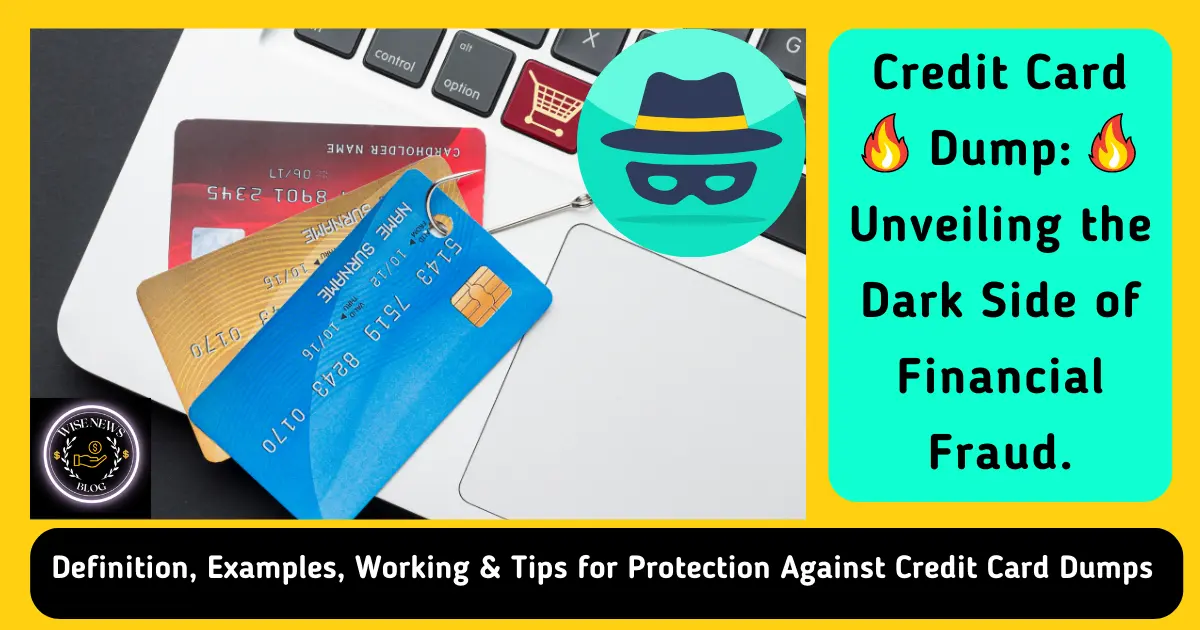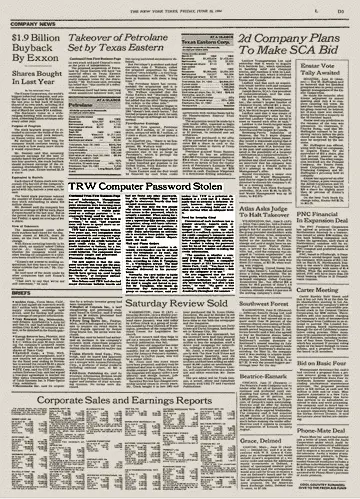Our financial transactions are now remarkably quick and convenient, thanks to the environment we live in. Nevertheless, there is a murky area known as credit card dumping in addition to these improvements. This article will examine the terrifying facts of this unlawful practice, including how it occurs, the terrible effects it has, and the precautions we may take to stay ourselves. In this article, we are going to learn all about Credit Card Dump or also known as CC Dumps, prepare yourself.

1. What is A Credit Card Dump (CC Dumps)?
Imagine you are waking up one morning, and find your bank account emptied and your credit card maxed out. This nightmare scenario could be the result of credit card dumping – a sophisticated form of financial fraud where criminals steal your credit card information and sell it on the dark web.
A credit card dump is when someone/hacker makes an illegal and unauthorized digital copy of a credit. These dumps contain crucial details such as the cardholder’s name, credit card number, expiration date, and CVV code and can be used for unauthorized purchases.
👉 Read More: Can You Go to Jail for Not Paying Afterpay 🔥
2. How Do Credit Card Dumps Work?
Criminals use various techniques to obtain credit card information, including skimming, hacking, and phishing. Let’s take a closer look at them one by one.
# Skimming:
Skimming involves stealing credit card information during legitimate transactions. Criminals place skimming devices on ATMs, gas pumps, or handheld card readers. These devices capture the card’s magnetic stripe data, allowing fraudsters to create clone copies of credit cards.

# Hacking:
Highly skilled hackers breach the security systems of financial institutions, e-commerce websites, or payment processors. Once inside, they have the ability to gain access to credit card information, which they later sell on the dark web.

#Phishing:
Phishing involves many deceptive tactics like fraudulent emails or calls or malicious website links to trick individuals into revealing their credit card details and victims unknowingly hand over their sensitive information, providing criminals with the necessary data for credit card dumps.

# Malware/Virus Attack:
There are several malware and virus programs/applications exists which are made for stealing information from your computer or smartphone. These malicious applications are undetectable if you are not using good antivirus and malware detection programs.

3. Some Facts and stats about Credit Card Fraud.
The first credit card dump/fraud was reported by the New York Times in the year of 1984 when the password for a leading credit union, TRW, was stolen from a Sears store on the West Coast. That password unlocked the credit histories and personal information of many Sears customers.

According to the Statista report around 1,108,609 complaints of identity theft were filed during 2022 in the United States with the Federal Trade Commission (FTC).

Overall, the U.S. had over two billion U.S. dollars of reported losses in 2022 & California ranked first by the amount of monetary losses through cyber crime whereas Florida was second by cybercrime losses, reporting around 845 million U.S. dollars of losses, while New York followed with 777 million U.S. dollars.

4. The Consequences of Credit Card Dumping
The consequences of credit card dumping are severe and far-reaching. Credit card dumping makes you suffer financial losses, can damage your credit scores, and it is very difficult to reclaim your stolen identity. Moreover, the emotional trauma on individuals cannot be underestimated.
5. Steps to Protect Yourself from Credit Card Dumping.
You should assume that card scammers are smarter than you then you have to be smarter too, you can take some proactive steps to safeguard your financial information:
- Keep your card in a secure and safe place.
- Keep your card in sight at all times during purchases.
- Develop a habit of monitoring your bank accounts and credit card statements regularly.
- Enable real-time transaction notifications to receive alerts for any unauthorized charges.
- Use strong, unique passwords for online accounts and enable two-factor authentication whenever possible.
- Be cautious when sharing your credit card details online, ensuring the website is secure and trustworthy.
- Keep your devices and applications up to date to protect against vulnerabilities that hackers exploit.
- Never respond to emails and calls through which your financial information could be stolen.
- Never click on untrusted links received through social media feed that claim you won the lottery or jackpot.
- Use good antivirus and antimalware software for PC and smartphones
- Never use an unsecured wifi network to make your financial transactions.
- last but not least, increase your financial scamming awareness.
6. Indicators of Theft of Credit Card Information.
The most common indicators that your credit card information is compromised include:
- Seeing unauthorized charges on your credit card statement.
- Suddenly being locked out of your credit card account.
- Unknown inquiries from collection agencies.
- Receiving a notification from your bank of a low balance alert.
Unfortunately, it is nearly impossible to know whether your credit card information has been stolen or not. You only come to know when an unauthorized transaction will occurred.
7. Reporting Credit Card Dumping Incidents.
If you become a victim of credit card dumping, it is crucial to report the incident immediately. Make contact with your bank or credit card issuer immediately and inform them about the fraudulent activity.
Numerous credit card companies follow a “zero liability” policy, meaning you will not be held liable for unauthorized charges.
You should also file a complaint with the law enforcement agency for the investigation and prosecution of the criminals involved.
8. Legal Consequences and Penalties.
Engaging in credit card dumping is a serious crime that carries severe legal consequences. Offenders may face significant fines and lengthy prison sentences. Credit card fraud that involves the theft of the card or the number typically has a prison sentence of 1 to 5 years. Identity theft is treated much more harshly with prison sentences up to 10 or 20 years.

9. How Do Banks and Financial Institutions Combat Credit Card Dumping?
Banks and financial institutions are using advanced technologies and fraud detection systems to identify and prevent credit card dumps. They continuously monitor transactions, patterns, and anomalies to detect suspicious activity and protect their customers from fraudulent attacks.
10. The Role of Artificial Intelligence in Detecting Credit Card Dumping.
Artificial intelligence (AI) plays a crucial role in the fight against credit card dumping. AI algorithms analyze vast amounts of data, identifying patterns and anomalies that humans might overlook. By using machine learning and predictive analytics, financial institutions can enhance their system security and can proactively detect and prevent credit card dumps.

11. The Emotional Impact of Credit Card Dumping.
The emotional toll on victims of credit card dumping is significant. Individuals experience a sense of violation, loss of trust, and an ongoing fear of financial insecurity. It may long time to recover from such a situation requires not only financial restoration but also emotional support.

12. Case Studies: Real-Life Examples of Credit Card Dumping Incidents.
To illustrate the severity and impact of credit card dumping, let’s examine a few real-life cases that have made headlines worldwide:
1. Case Study 1: The Mega Breach
In 2017, a major financial institution that is credit bureau Equifax suffered a massive data breach, resulting in the compromise of millions of credit card accounts. The stolen information was subsequently sold on the dark web, leading to a wave of fraudulent activities and significant financial losses for the victims.
2. Case Study 2: The Hotel Skimming Scam.
In 2019, Trend Micro a leading antivirus and IT security providing company revealed that they discovered credit card stealing malware (Magecart) hiding in an online hotel reservation system. It was found that two hotel websites – from two different hotel chains – had been compromised. The hackers injected a malicious Java script into the booking website of said hotel chain which acted as a credit card skimmer and stole payment information.
13. Emerging Trends in Credit Card Dumping.
As technology evolves, credit card dumpers are adapting more sophisticated AI-powered hacking tools, and continuous advancements in phishing techniques. Emerging trends include the utilization of cryptocurrencies for transactions. Staying informed and vigilant is the only way to have a common man avoid financial fraud.
Conclusion.
Credit card dumping is a bitter truth in our society due to our dependence on technology. On the one hand credit card market is booming. As per the report of Statista, the credit card market share of in-store shopping in the US is 40% and the market share of Credit cards for online shopping in Europe is 19% on the other hand, CC dumping frauds are increasing day by day causing financial as well as emotional losses.
We can all work together to stop this criminal activity and defend ourselves from its clutches by being aware, implementing security habits, and reporting events as soon as they occur. We hope that our article will help a little in creating awareness to prevent such frauds.
FAQs
Q1. How can I detect if my credit card has been dumped?
Watch out for unauthorized charges on your credit card statement or receive notifications for transactions you didn’t make. If you suspect credit card dumping, contact your bank or credit card issuer immediately to investigate further.
Q2. Can I recover my financial losses after falling victim to credit card dumping?
Recovering from credit card dumping can be a complex process, but it is possible. Contact your bank or credit card issuer, report the incident, and work closely with them to recover your funds and restore your financial well-being.
Q3. Are all online transactions vulnerable to credit card dumping?
While online transactions carry some risk, reputable websites and secure payment gateways employ encryption and security measures to protect your credit card information. However, it’s crucial to exercise caution, verify website security, and avoid sharing sensitive data on suspicious platforms.
Q4. How long do credit card dump investigations typically take?
The duration of credit card dump investigations varies based on the complexity of the case and the available resources for law enforcement agencies. Patience and full cooperation are essential to aid in the resolution process.
Q5. What should I do if I suspect someone has obtained my credit card information illegally?
If you suspect your credit card information has been compromised, contact your bank or credit card issuer immediately. They will guide you through the necessary steps to protect your account, investigate the matter, and ensure your financial security.


Technology and AI: Under the Microscope